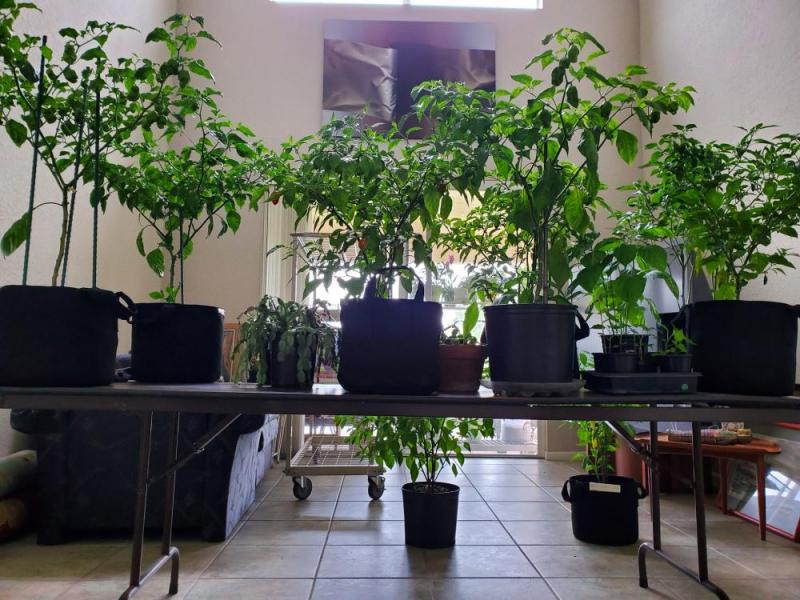Had 2 plants that all of a sudden just started to do very bad even as young seedlings.
1 was a double that from the very start could never take much sun. Passed that off as it being a baccatum in sFL summer. After an hour or 2 of morning sun it would wilt heavy unlike all its brother baccatums that could take a lot more sun and would recover much faster once in the shade. So, this sickly plant that couldn't take the sun did kind of ok in the shade for months. Grew about 21" high, not bushy, but did set some fruit. Finally one day left it in the sun for a couple hours, it wilted badly and never recovered. Other than that, no other obvious problems, no spots on stems or leafs, no pests, no fungal.
Pulled them from their containers and saw the smallest root balls as in the pic. These plants/roots had been sitting out for a few days before the pic was taken today.
The second plant was almost the same but on a Reaper that just never took off and only got to maybe10" high no flowers or fruit, and another very small root ball.
Looked carefully thru those containers media mix(the same light airy mix I use on everything) and could not find any pests at all. Looked at the roots and also nothing there I could see...
What causes this very small root ball, can't take the sun, and stunted growth sickly plant when all the basics are right and identical to 40+ other plants doing extremely well..?
1 was a double that from the very start could never take much sun. Passed that off as it being a baccatum in sFL summer. After an hour or 2 of morning sun it would wilt heavy unlike all its brother baccatums that could take a lot more sun and would recover much faster once in the shade. So, this sickly plant that couldn't take the sun did kind of ok in the shade for months. Grew about 21" high, not bushy, but did set some fruit. Finally one day left it in the sun for a couple hours, it wilted badly and never recovered. Other than that, no other obvious problems, no spots on stems or leafs, no pests, no fungal.
Pulled them from their containers and saw the smallest root balls as in the pic. These plants/roots had been sitting out for a few days before the pic was taken today.
The second plant was almost the same but on a Reaper that just never took off and only got to maybe10" high no flowers or fruit, and another very small root ball.
Looked carefully thru those containers media mix(the same light airy mix I use on everything) and could not find any pests at all. Looked at the roots and also nothing there I could see...
What causes this very small root ball, can't take the sun, and stunted growth sickly plant when all the basics are right and identical to 40+ other plants doing extremely well..?




